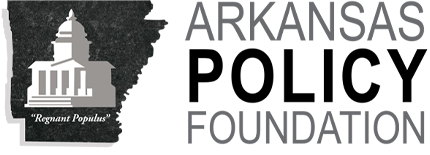“Certain funds are not being distributed to low-income K-12 school districts as originally intended.” Policy Foundation Efficiency Project, Second Report, Recommendation #50, p. 181
(May 2017) Mission creep describes the tendency of government programs to expand beyond their original purpose. One Arkansas example is a 1997 program that pays incentive bonuses to teachers that obtain national-board certification and work in high-poverty K-12 public schools. The program grew over two decades into a $16 million program that also pays bonuses to teachers in other schools.
‘Mission Creep’ Timeline
The Office for Education Policy (OEP) at the Univ. of Arkansas in Fayetteville has written about the program.2 An OEP timeline3 illustrates ‘mission creep.’
1997 State Department of Education pays $2,000 and up to three days of substitute pay($200);4
1999 Education department increases program funding;5
2001 Incentive bonus increased to $3,000. School principals and assistant principals made eligible for the program;
2003 Incentive bonus increased to $4,000 (2004) and $5,000 (2005 and beyond);6
2009 Bonuses counted as salary for the purpose of retirement benefits;7
2009 Bonuses awarded to teachers in teacher preparation programs at state-supported institutions of higher education.8
OEP’s Dr. Gary Ritter explained problems with the program in a 2016 Arkansas Democrat-Gazette column:
“In 2014-15, of the nearly 40,000 teachers in Arkansas, just under 2,700 were (national board-certified)(6.8 percent of teachers). Unfortunately, (they) are far more likely to work in districts serving the fewest high-poverty students. Only 2 percent work in the poorest decile of districts in the state; on the other hand, 22 percent of the state’s NBCTs serve students in the most advantaged decile of Arkansas districts.”9
OEP notes that the program expanded10 despite the absence of “studies measuring the impact” of bonuses on Arkansas student performance.
Legislative Action in 2017
State Sen. Alan Clark, R-Lonsdale, sponsored SB 555 to modify the program. The bill reduced bonuses to $2,500 for teachers not employed in high-poverty school. The bill maintained the $5,000 bonus for a teacher employed “full-time in a high-poverty school that is not in a high-poverty district. It also reduced the time period for receiving bonuses from 10 to five years.11 SB 555 passed the legislature and became Public Act 937 of 2017 on April 6.
Fiscal Impact
The Bureau of Legislative Research was unable to determine the fiscal impact of SB555 because it is difficult to predict the number of board-certified teachers and where they will teach. OEP, however, created a cost comparison of the old and new incentive structures and noted the following:
“Over the past four years, approximately 100 Arkansas teachers achieve Board certification each year. Under the current incentive structure, each cohort would cost the state $500,000 annually, or $5 million over ten years. Under the new incentive structure in SB555, the 69 teachers in non -high poverty schools would receive $2,500 for 5 years, the 8 teachers in high-poverty schools in non-high-poverty districts would receive $5,000 for 5 years, and the 23 teachers in high poverty schools in high poverty districts would receive $10,000 a year for 10 years. These bonuses would total $3,362,500, over $1.6 million less than under the current incentive structure.”12
Other Potential Savings
The state could reduce funding for the program to $5 million annually by engaging non-profit groups to operate the program, a type of privatization. These groups include Arkansas Teacher Corps and Teacher for America. 13
Conclusion
Policymakers are starting to address one problem identified by the Efficiency Project. The program’s original intent was to incentivize teachers to teach in high poverty schools. OEP’s work documented ‘mission creep’ within the program, and policymakers responded in 2017 with a new incentive structure. But further savings are possible by working with non-profit teaching groups.
–Greg Kaza
1 Arkansas Policy Foundation (September 2016), www.arkansaspolicyfoundation.org
2 OEP Policy Brief, “Categorical Poverty Funding in Arkansas,” April 2013
3 OEP Policy Brief, “National Board Certified Teacher Incentive Bonuses: Senate Bill 555,” March 2017
4 PA Act 1225 of 1997 (HB 1975). Sponsor: State Rep. David Choate, D-Beebe.
5 PA 58 of 1999 (SB 261). Sponsor: State Sen. Stanley Russ, D-Conway
6 PA1803 of 2003 (HB 2903). Sponsor: State Rep. Eric Harris, R-Lowell
7 PA1326 of 2009 (SB 240). Sponsor: State Sen. Gene Jeffress, D-Louann. The measure passed the state Senate (35-0) and the state House (92-0).
8 PA1449 of 2009 (HB 1862). Sponsor: State Rep. Les Carnine, R-Rogers. The measure also passed unanimously.
9 Dr. Gary W. Ritter, “A Modest Proposal.” Arkansas Democrat-Gazette, March 12, 2016
10 By 2016 the program was providing up to $50,000 over 10 years to board-certified teachers, though most do not teach in high-poverty Arkansas schools.
11 Teachers working in high-poverty schools in high-poverty districts would qualify for $10,000 bonuses. SB 555 maintained the 10-year period for teachers in this numerically small group.
12 OEP Policy Brief, “National Board Certified Teacher Incentive Bonuses: Senate Bill 555,” March 2017
13 http://arkansasteachercorps.org/ and https://www.teachforamerica.org/









